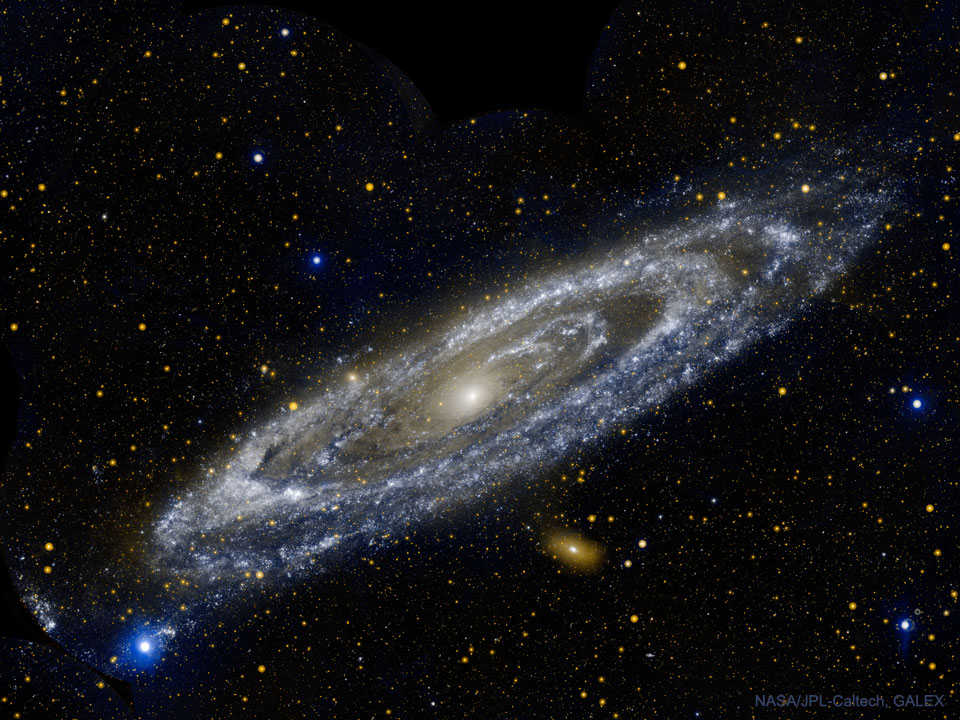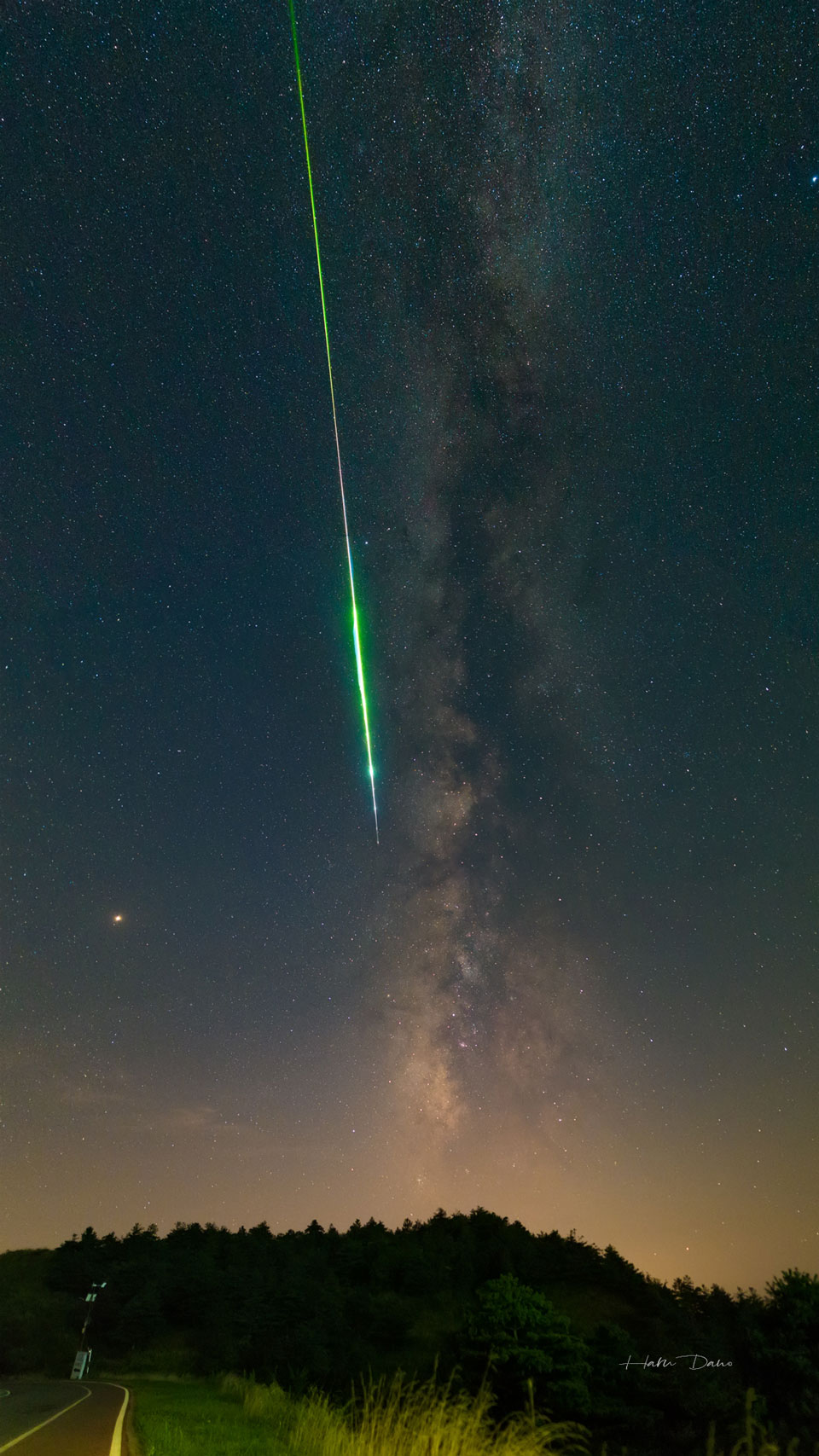Nombre total de pages vues
07/08/2021
PRATIQUE - Voici l'astuce pour nettoyer vos ongles facilement.
ASTRONOMY - Stars and Dust Across Corona Australis
2021 August 6
Image Credit & Copyright: Vikas Chander
Explanation: Cosmic dust clouds cross a rich field of stars in this telescopic vista near the northern boundary of Corona Australis, the Southern Crown. Less than 500 light-years away the dust clouds effectively block light from more distant background stars in the Milky Way. Top to bottom the frame spans about 2 degrees or over 15 light-years at the clouds' estimated distance. At top right is a group of lovely reflection nebulae cataloged as NGC 6726, 6727, 6729, and IC 4812. A characteristic blue color is produced as light from hot stars is reflected by the cosmic dust. The dust also obscures from view stars in the region still in the process of formation. Just above the bluish reflection nebulae a smaller NGC 6729 surrounds young variable star R Coronae Australis. To its right are telltale reddish arcs and loops identified as Herbig Haro objects associated with energetic newborn stars. Magnificent globular star cluster NGC 6723 is at bottom left in the frame. Though NGC 6723 appears to be part of the group, its ancient stars actually lie nearly 30,000 light-years away, far beyond the young stars of the Corona Australis dust clouds.
05/08/2021
SANTé/MéDECINE - Fracture de la verge… dans le sens vertical !
SANTé/MEDECINE - Le remède très simple pour soulager une piqure de moustique
ASTRONOMY - The Andromeda Galaxy in Ultraviolet
2021 July 18
Image Credit: NASA, JPL-Caltech, GALEX
Explanation: What does the Andromeda galaxy look like in ultraviolet light? Young blue stars circling the galactic center dominate. A mere 2.5 million light-years away, the Andromeda Galaxy, also known as M31, really is just next door as large galaxies go. Spanning about 230,000 light-years, it took 11 different image fields from NASA's Galaxy Evolution Explorer (GALEX) satellite telescope to produce this gorgeous portrait of the spiral galaxy in ultraviolet light in 2003. While its spiral arms stand out in visible light images, Andromeda's arms look more like rings in ultraviolet. The rings are sites of intense star formation and have been interpreted as evidence that Andromeda collided with its smaller neighboring elliptical galaxy M32 more than 200 million years ago. The Andromeda galaxy and our own comparable Milky Way galaxy are the most massive members of the Local Group of galaxies and are projected to collide in several billion years -- perhaps around the time that our Sun's atmosphere will expand to engulf the Earth.
04/08/2021
ASTRONOMY - EHT Resolves Central Jet from Black Hole in Cen A
2021 August 4
Image Credit: Radboud University; CSIRO/ATNF/I.Feain et al., R.Morganti et al., N.Junkes et al.; ESO/WFI; MPIfR/ESO/APEX/A. Weiss et al.; NASA/CXC/CfA/R. Kraft et al.; TANAMI/C. Mueller et al.; EHT/M. Janssen et al.
Explanation: How do supermassive black holes create powerful jets? To help find out, the Event Horizon Telescope (EHT) imaged the center of the nearby active galaxy Centaurus A. The cascade of featured inset images shows Cen A from it largest, taking up more sky than many moons, to its now finest, taking up only as much sky as an golf ball on the moon. The new image shows what may look like two jets -- but is actually two sides of a single jet. This newly discovered jet-edge brightening does not solve the jet-creation mystery, but does imply that the particle outflow is confined by a strong pressure -- possibly involving a magnetic field. The EHT is a coordination of radio telescopes from around the Earth -- from the Caltech Submillimeter Observatory in Hawaii USA, to ALMA in Chile, to NOEMA in France, and more. The EHT will continue to observe massive, nearby black holes and their energetic surroundings.
03/08/2021
ASTRONOMIE - La nuit des étoiles
Quelles sont les dates pour 2021 ?
I-PHONE ASTUCES - Plein de photos d'un seul coup
Prendre une rafale de photos d’un coup Vous voulez prendre plein de photos d'un seul coup ? Il suffit de rester appuyé sur le bouton pour enclencher le mode rafale automatiquement.
ASTRONOMY - A Perseid Fireball and the Milky Way
2021 August 3
Image Credit & Copyright: Dandan Huang
Explanation: It was bright and green and flashed as it moved quickly along the Milky Way. It left a trail that took 30 minutes to dissipate. Given the day, August 12, and the direction, away from Perseus, it was likely a small bit from the nucleus of Comet Swift-Tuttle plowing through the Earth's atmosphere -- and therefore part of the annual Perseids meteor shower. The astrophotographer captured the fireball as it shot across the sky in 2018 above a valley in Yichang, Hubei, China. The meteor's streak, also caught on video, ended near the direction of Mars on the lower left. Next week, the 2021 Perseids meteor shower will peak again. This year the Moon will set shortly after the Sun, leaving a night sky ideal for seeing lots of Perseids from dark and clear locations across planet Earth.
02/08/2021
PRATIQUE/POURQUOI - Pourquoi un glaçon flotte t-il sur l'eau ?
ASTRONOMY - Orion and the Ocean of Storms
2025 December 13 Orion and the Ocean of Storms Image Credit: NASA , Artemis 1 Explanation: On December 5, 2022, a camera on board the u...

-
2022 September 26 All the Water on Planet Earth Illustration Credit: Jack Cook, Adam Nieman, Woods Hole Oceanographic Institution ; Data ...
-
2025 May 11 The Surface of Venus from Venera 14 Image Credit: Soviet Planetary Exploration Program , Venera 14 ; Processing & Copyri...









